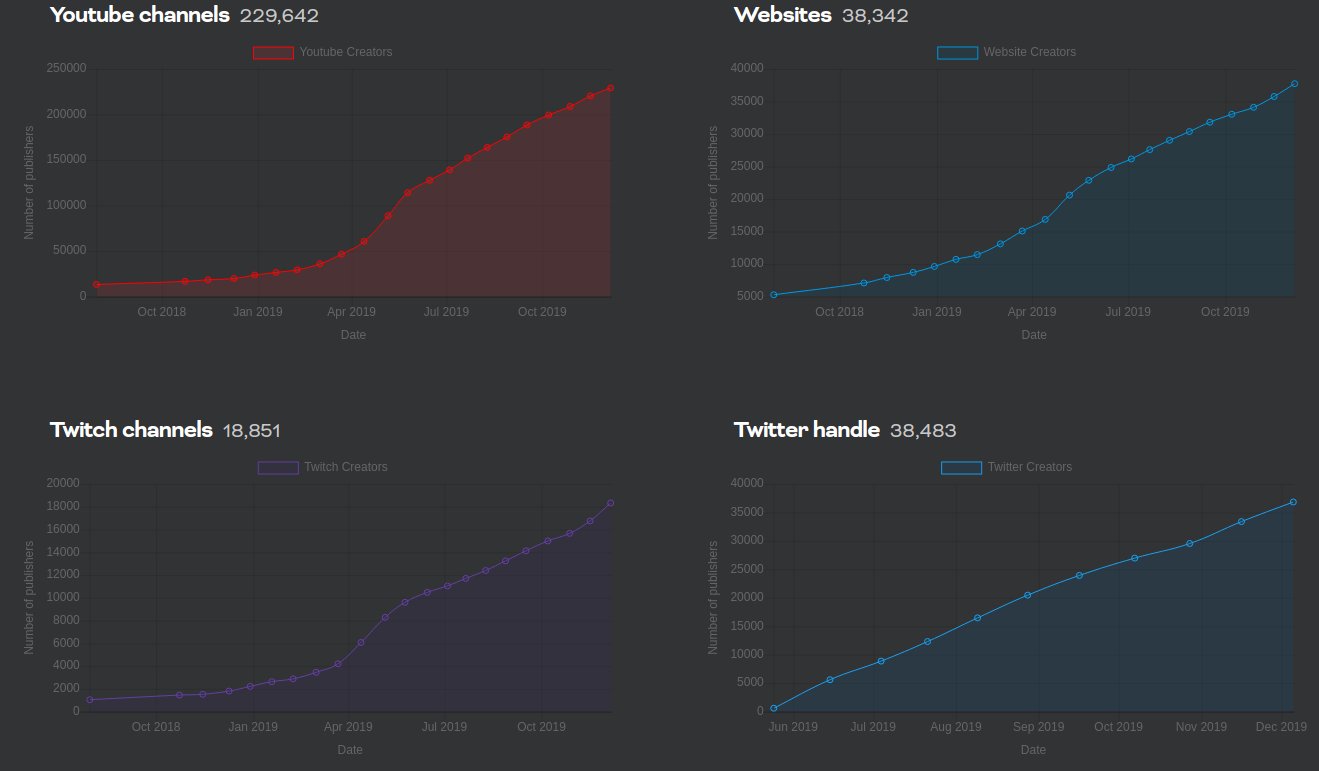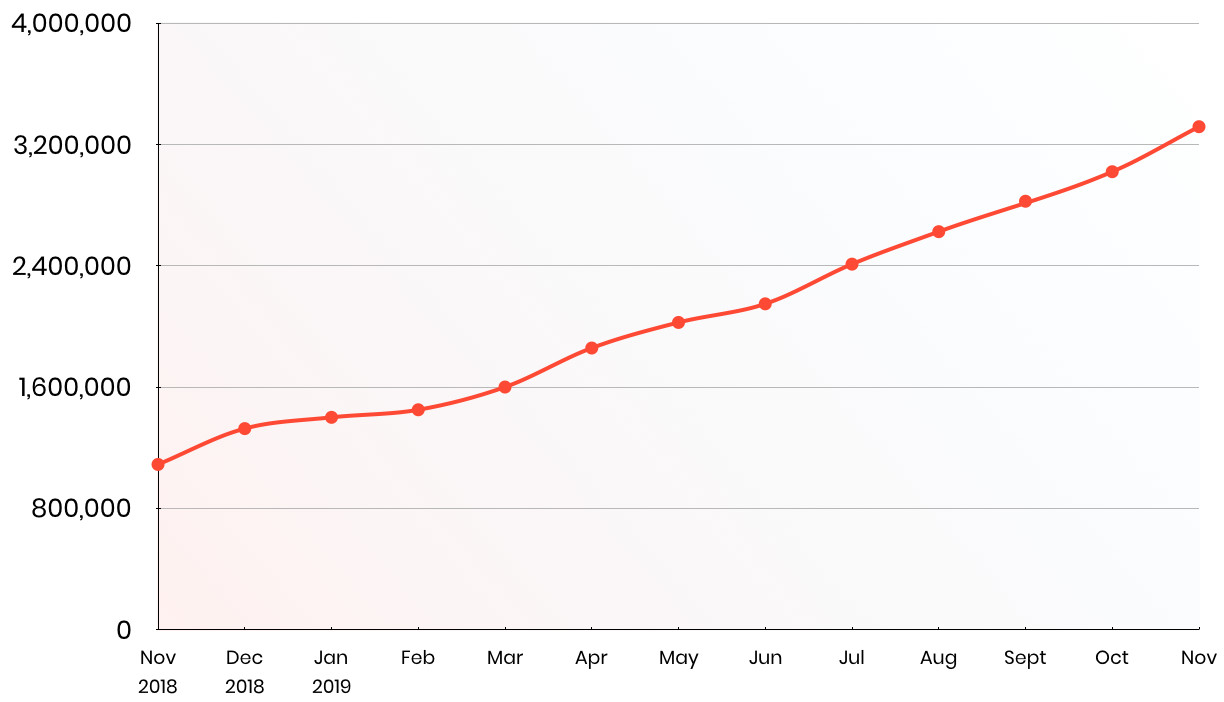Why Are You Still Not Using Brave?
- The privacy-focused browser is quickly gaining momentum after its 1.0 version release.
- With features like Brave Rewards, seamless security, and top speed, Brave is gradually turning into the benchmark browser of the future.
Brave logo on a dark background. XDA Developers
Since its first version, which was released way back in January 2016, the Brave browser has come a long long way. After some initial criticisms of the new and disruptive advertising model the browser is built around, people started recognizing the value of this new gateway to the internet. And rightly so.
With scandal after scandal exposing the unreliability of large corporations to handle user data responsibly, the privacy-focused Brave gains speed as quickly and as easily as Chrome did back in 2012 when it overtook Firefox and Internet Explorer to become the number one browser in the world.
In its latest announcement, the Brave team remark on the explosive growth the browser has seen since its 1.0 version release on November 13. Brave 1.0 skyrocketed monthly active users from 8.7 million in October to 10.4 million in November (a 19% increase).
In an even more impressive statistic, this jump to 10.4 million means that Brave doubled its monthly active users in one year. Daily active users on the other hand have tripled over the same period, erupting to a respectable 3.3 million.
Of course, compared to Chrome’s billions, Brave’s numbers are still on the low side and don’t get me wrong, Google Chrome is a decent browser or it wouldn’t have more than 60% market share.
However, while other browsers like Opera have identified that digital assets are inevitably going to be part of the future of the internet, Chrome has done little to adapt its product to these new user experiences.
Speaking of the future, I personally believe that Brave will be the new browser benchmark in the coming years. As it becomes more and more popular and as crypto becomes more and more mainstream, people will surely begin moving to Brave, mainly due to its features better matching new user demands.
Brave features
If you are still not using Brave, here’s a quick list of features that will help you decide if it is time for a change.
Privacy
We already leaned lightly on the fact that Brave is focused on privacy in an increasingly privacy-deprived world and that’s perhaps one of its best sales pitches.
The browser doesn’t store any of your personal data somewhere on a Brave server as it is all stored locally on your device. That’s right. You are in full control of your browser data and can delete it whenever you wish to do so.
Furthermore, private windows are actually private, unlike some other browsers – you know who you are. In Brave, private windows use Tor, not only hiding your search history, but also masking your location from any site you visit.
Not to mention the fact that private windows, by default, use DuckDuckGo as a search engine, further guaranteeing a truly private browsing session.
Brave Rewards
Using the Basic Attention Token (BAT), the browser’s very own utility token, both web surfers and content creators can be rewarded for their efforts – willingly, safely, and anonymously.
Content creators can sign up to become verified and receive tips from thankful users. This includes YouTube channels, news websites, Twitch streamers, Twitter influencers, and more. As of this moment, there are close to 350,000 verified publishers, most of them YouTube channels.

On the other side of the equation, Brave rewards users’ attention with BAT tokens, seamlessly connecting advertisers, publishers, and potential customers. Unlike current advertising models, the Brave Rewards system cuts out the countless middlemen taking a chunk out of the spread, making advertising far more optimized and cost-effective.
It additionally allows users of the browser to control how many ads they want to see per hour, but most notably, rewards users for viewing these ads. That’s right. Not only are publishers rewarded for their advertising efforts, but also the people who actually take interest in the ads.
And that’s the whole point of the advertising model of the Brave and BAT ecosystem – it rewards attention. The beautiful part is that, if you don’t want to, you don’t need to get involved in any of that. Participation in the Brave Rewards program is voluntary.
However seeing as you are most probably browsing the web for a good chunk of time every day, why not make a some extra money out of it?
Speed
Marketed as 3 to 6 times faster than other browsers, I was really skeptical. I understand some 10 – 20% faster, but 3 to 6 times? And then I made the switch from Chrome to Brave, first on mobile and then on desktop.
I felt the difference instantly, especially on mobile. I don’t know about 3 to 6 times, but sites are now definitely loading much faster, most notably when we consider the time to interactive metric i.e. I can interact with sites much sooner now.
Whereas previously I’d see the bulk of the site loaded, but watch the browser still struggle, perhaps working on god knows how many scripts in the background. Extensions did help, but they’d usually break sites, forcing me to manually sift through resources and allow specific ones to fix the problem.
With Brave, I haven’t had any issues at all. The shields, which we will discuss in the next section, block everything I don’t want to see, and sites are working normally, while still loading much faster.
Security
I don’t know about you, but I don’t like having a lot of extensions installed in my browser. A few did the trick for me when I was using Chrome, but I much rather prefer Brave taking care of everything for me – blocking malware, preventing tracking scripts, etc.
Brave comes with a few shields, guarding you from malicious and annoying websites. Naturally, you can modify what is blocked, but the good news is, you are protected by default. You don’t need to install any ad or script blockers.
Compatibility
Since Brave is based on the Chromium browser, most extensions that are supported by Chrome are also supported by Brave. And since Chrome is the most popular browser by far at the moment, it seems that the Brave team have correctly targeted their main competitor, easing the potential transition of millions of users.
Crypto wallet
Earlier this year, Brave introduced an Ethereum crypto wallet into its browser, making it web3 compatible and fully ready for dapps interaction.
Summary
All said, Brave is an excellent browser, fully focused on user privacy while also setting up the stage for a modern advertising ecosystem – one that rewards participants fairly.
The reimagined features of the browser are all built with the future of the internet in mind, preparing it to cope with growing user demands such as dapp interaction, digital asset management, and seamless security.
Ultimately, the explosive growth of the Brave userbase over the course of 2019 clearly shows a flourishing interest in what the browser offers, confirming the idea that we really do deserve a better internet.
- Support for Bitcoin, Solana, Polygon, StarkEx, Ronin, Celo, Nervos, and IXO has already been added to Opera’s Android app, and will soon arrive to its desktop version.
- The move is part of Opera’s Web3-focused initiative called the “Crypto Browser Project”, which was launched in beta earlier this year.
- The new Opera browser was designed to improve the user experience when browsing decentralized apps, games, and metaverse platforms.
- A new non-custodial wallet will be at the core of the new Opera experience, allowing users to access their crypto and dApps without extensions.
- The browser surpassed 12.5 million daily active users.
- Its privacy-preserving ad platform saw its revenue increase 14x in the past 18 months.


